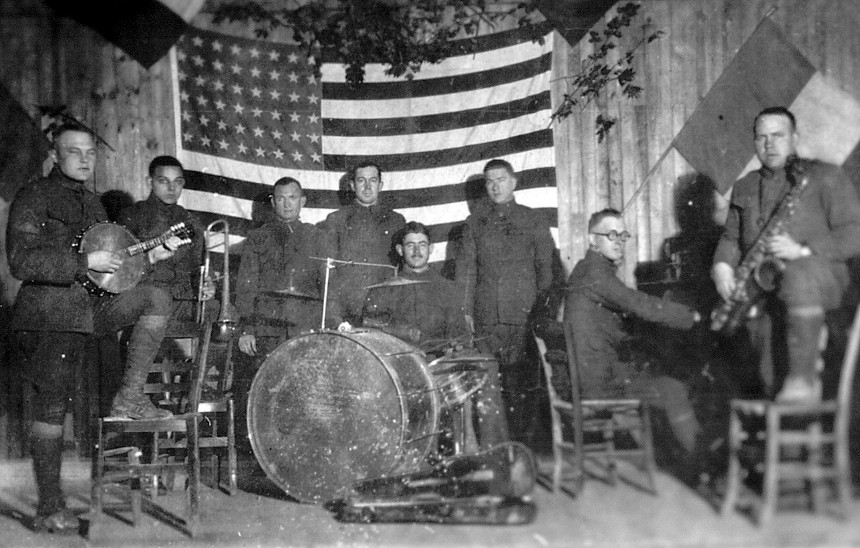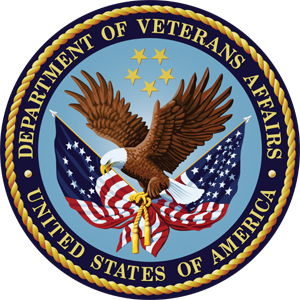Remembering My Father and World War I
Veterans Day. At 11 a.m. a wreath is laid at the Tomb of the Unknown Soldier at Arlington National Cemetery, marking the hour the fighting ended in World War I — November 11th — known originally as Armistice Day.
At the eleventh hour on the eleventh day of the eleventh month in 1918, the guns on the Western Front fell silent, ending one of the greatest military slaughters in world history.
British Prime Minister Harold Macmillan (1957-1963) said one time that the only reason he was prime minister was that all the men of his generation who would have been had been left on the battlefields of France.
World War I was called — no doubt out of hope — “The War to End All Wars.”
It obviously did not end all wars. See the history books for World War II, Korea, Vietnam, Iraq (two wars there), Afghanistan, and a distressingly long list of others. But the Armistice did stop the carnage wrought by the old principle of battle — to have your men attack the other side’s battle line. In World War I, with fixed positions and lines, those attacks came in waves, day after day, night after night — across a barren expanse known as “No Man’s Land” — into withering fire from the modern machine gun.
The carnage inspired a poem by a Canadian doctor, Lieutenant Colonel John McCrae, written shortly after he lost a friend at Ypres in the spring of 1915, when he saw poppies growing in the battle-scarred field:
In Flanders fields the poppies blow
Between the crosses, row on row,
That mark our place; and in the sky
The larks, still bravely singing, fly
Scarce heard amid the guns below.
We are the Dead. Short days ago
We lived, felt dawn, saw sunset glow,
Loved and were loved, and now we lie,
In Flanders fields.
The doctor’s poem, “In Flanders Fields,” resonated.
To the point that 20 years later, when I was a little girl, artificial red poppies — usually red paper flowers for the lapel — were a common sight on Armistice Day, made by the American Legion to benefit veterans. They were often sold by veterans on the streets, a bit like the Santas who ring their bells by the Salvation Army black kettles at Christmas.
When I was a little girl, I also remember the casing of an artillery shell that stood on the end table in our living room, like an empty, unused flower vase. Shiny metal, brass I think, perhaps 16 inches high and four or five inches round.
It took a few years for me to link the unusual metal thing on the end table to the story my father, who served in World War I, liked to tell about being sent overseas and writing home to tell his mother where he was stationed. She was so relieved to learn he’d not been sent up to the front, that he would be “safe” stationed at an ammunition dump. She failed to appreciate the dangers.

These World War I incidents and memorabilia were part of my childhood.
When people spoke of “the war” back then, it was World War I. Years later, “the war” became World War II. And still is to “The Greatest Generation.”
I may be a child of “The Greatest Generation,” but my childhood memories are of World War I, its songs playing on the radio still. The sad “Roses of Picardy.” Or, “There’s a long, long trail a winding … into the land of my dreams.” George M. Cohan’s “Over There” was still played sometimes and, occasionally, a whimsical offering by Irving Berlin, who would later give us “God Bless America.” An expression of the everyday soldier starting his day of service to his country, “Oh, how I hate to get up in the morning.”
“Roses of Picardy” by Mario Lanza (Uploaded to YouTube by Megamusiclover1234)
Music was a natural part of my memories. My father played the saxophone in a band in his college years, and during the interregnum in France. I think that the guys in the band, or most of them, went off to war together, played overseas together, and returned to college — this time the University of Michigan — together. I know they took basic training at Fort Benning, Georgia, for my father often told the story of the time they played for a local town dance.

They were going through their usual repertoire, which included a medley they went into as easily as they’d done a hundred times before. But this time they were only a few bars into one of the songs when the dancers paused and turned in their respective places on the dance floor to glare at the band with downright mean stares. They then stalked off the dance floor, often with a parting angry glance over their shoulders.
Too late Daddy and his buddies realized they were playing “Marching Through Georgia.”
As a friend of mine from Georgia said, speaking of that time, “There were still grandmothers in town who remembered Sherman.”
Daddy often talked about places he visited before being shipped home. Nothing like a Cook’s Tour of France and its close neighbors, but I remember his mentioning the town of Nancy and/or Nantes. And he ventured, although not too deeply, into the Alps.
He returned, as noted, and transferred to the University of Michigan, where he met my mother. And his life slipped into that of a young man embarking on his life in his early twenties.
Not all the veterans of World War I were so fortunate. Those who had left their jobs to serve their country returned to find their jobs had been permanently filled. And it left such a stain that the United States Congress decreed — formally written into law — that those who served in World War II (and all subsequent wars) would get their jobs back when they returned.
Not just a job. The job they’d had.
When I started at the Chicago Daily News as a copygirl in December 1944, there were around six female reporters my first year. They had been hired to replace the guys who were away fighting for their country. When the war ended and the guys returned, two of the women were so good they were kept on, and the staff expanded. The others cleaned out their desks and the guys who’d once been there sat down at their typewriters as before.
Congress also promised anyone who served a college education, in what came to be known as the G.I. Bill. And with the war’s end, colleges and universities across this country changed once again: during the war, regular students had been replaced by servicemen learning about pre-flight training, navigation, the fine art of a bomb sight; after the war, students found their ranks expanded by former G.I.s taking advantage of the opportunity to get a college degree.
It may be common today. But it was a rarity before World War II.
The G.I. Bill also made it possible for veterans to buy homes with little or no down payment and the government backing the mortgage. That’s why the Levitt towns and subdivisions with all those cul de sacs sprouted outside cities. Hundreds and hundreds and still more hundreds of veterans were able to buy homes.
In that respect, beyond the political alliances and treaties and missteps that led to World War II and its legacy, World War I had a major impact on life in this country. Everyday life. The determination to do right — this time — by all those who had served.
And today it’s almost forgotten. Only the anniversary date of its end is remembered, and it’s no longer Armistice Day.
Now it’s Veterans Day.
But still a day to pause — particularly, at 11 a.m. — to remember those who served.
Which is what this nation does.
In fact, some years ago when Congress decided that holidays should, whenever possible, be celebrated on Mondays so people could enjoy long weekends, the outcry from veterans and veterans’ groups about changing Veterans Day was so great that Congress had to change the date back to November 11. It wreaked havoc for a couple of years, however, because of the calendars that had been printed before the outcry.
A small price to pay, however, for a national holiday of such significance being observed on its anniversary date.
From those long ago days of childhood and the story about playing “Marching Through Georgia” to a reunion long years after the end of World War II, I remember Daddy talking about the war. Teaching me a few French words (not parlez-vous Francais?). And threaded through it all, his buddies.
They were just names to me until they gathered once again in our home in Wilton, Connecticut, one beautiful day in 1960, and brought new meaning to the word reminisce.
A happy time, created out of war time.
Featured image: Mike Pellinni / Shutterstock
Six Fun (or Frustrating) Facts about Thanksgiving and Other Federal Holidays
When it comes to federal holidays in America, most people don’t think much about them unless they’re happy for an extra day off of work. But behind the list of dates on your job benefits form are Congressional oversight, rules, compromises, and, occasionally, bitter feuds. With Veterans Day and Thanksgiving, November boasts two federal holidays; Martin Luther King, Jr. Day was also signed into law by President Ronald Reagan 25 years ago this month. In appreciation of those dates, we’re taking a look at a few things you might not know about your federal holidays.
1. There are Ten Official Federal Holidays

Federal holidays receive their designations from the U.S. Congress. Their jurisdiction includes federal institutions and their employees, and the District of Columbia; individual states and cities usually map their own observances onto the various holidays so that schools or other entities may be closed. The ten holidays by their official names are: New Year’s Day; Birthday of Martin Luther King, Jr.; Washington’s Birthday; Memorial Day; Independence Day; Labor Day; Columbus Day; Veterans Day; Thanksgiving Day; and Christmas Day.
2. MLK is the Newest Day
The most recently created federal holiday is the Birthday of Martin Luther King, Jr., commonly referred to as Martin Luther King, Jr. Day or abbreviated as MLK. The first bill to suggest the holiday went before Congress in 1979, but missed passage by five votes. The issue gained traction with the public, generating petitions and endorsements from celebrities like Stevie Wonder. Debate became incredibly contentious in the Senate; when North Carolina Senator Jesse Helms led opposition to the holiday and produced a document that he claimed contained proof of King’s association with communists, New York Senator Daniel Patrick Moynihan threw the papers on the Senate floor and stomped on them. On November 2, 1983, President Reagan signed the bill, with observances set to begin in 1986; however, some individual states resisted implementing the day as a paid holiday for years. Arizona’s resistance lost the state a chance to host Super Bowl XXVII. MLK wasn’t acknowledged as a state holiday in South Carolina until 2000.
3. It’s Still Washington’s Birthday
It’s widely believed that George Washington’s birthday was simply combined with Abraham Lincoln’s birthday to create President’s Day. Despite the name being in common use on calendars, President’s Day really only exists at state levels. The official federal name remains Washington’s Birthday; however, depending on your state, you could live a place that celebrates that, Presidents’ Day, President’s Day (note the apostrophe moved), Presidents Day (note the lack of apostrophe) or Washington’s and Lincoln’s Birthday. Colorado and Ohio call it Washington-Lincoln Day, Alabama throws in Thomas Jefferson, and Arkansas chooses to also recognize Daisy Gatson Bates, the newspaper owner and civil rights leader that advised and the aided the students known as the Little Rock Nine.
4. Columbus Day is Falling Out of Favor at the Local Level
Of the ten federal holidays, Columbus Day continues to be the one that generates the most controversy. Apart from the fact that Columbus never actually set foot in what is now the United States, much more has been learned and understood about his poor and violent treatment of the people of Central America. Though there is strong support in some quarters for keeping the holiday as is, particularly among many Italian-Americans who view it with a sense of pride, many states and cities have begun dismissing or replacing the holiday. Florida, Hawaii, Vermont, South Dakota, and Alaska not only do not recognize it, but have replaced it with Indigenous People’s Day. Iowa and Nevada don’t recognize it, but have state laws on the books to “proclaim” it; it is also not an official holiday in Oregon. As of 2017, more than 55 major American cities proclaim Indigenous People’s Day instead of Columbus Day. The United Native America group actively campaigns to drop it at the federal level.

5. Memorial Day and Veterans Day Are Not the Same Thing
The U.S. Department for Veterans Affairs, as you might expect, says it best: “ Many people confuse Memorial Day and Veterans Day. Memorial Day is a day for remembering and honoring military personnel who died in the service of their country, particularly those who died in battle or as a result of wounds sustained in battle. While those who died are also remembered, Veterans Day is the day set aside to thank and honor ALL those who served honorably in the military — in wartime or peacetime.” The placement of Veterans Day on November 11 is owed to the Armistice that ended World War I on that date in 1918; in fact, the day was called Armistice Day until a change was made by Congress in 1954. The history of Memorial Day, and its origins as Decoration Day, was covered by our Saturday Evening Post archivist Jeff Nilsson in 2009.
6. And You Thought Family Thanksgiving Could Be Contentious . . .
Almost since the founding of the United States, the government has called for national days of prayer or the giving of thanks. Obviously, this tradition goes back to the pilgrims, but actual government recognition started with a proclamation from George Washington in 1789; he designated a Thanksgiving Day for the 26th of November. For decades after, Thanksgiving Days were declared off and on, with state and territorial governors making declarations as well. In 1863, in the midst of the Civil War, Lincoln declared another national Thanksgiving Day, fixing it on the last Thursday of November.
That day held for the most part until 1939. Then, President Franklin D. Roosevelt, upon advice from department store

magnate Fred Lazarus Jr, decided to take advantage of a five-week November and designate Thanksgiving as the next-to-last Thursday of the month. The idea was to promote more shopping and commerce to help combat the lingering effects of the Great Depression. Prior to that time, it was considered unseemly to promote holiday shopping before Thanksgiving, and this would give both shoppers and businesses an extra week. Republicans in Congress objected, and discontent broke across state lines, with 23 states acknowledging Roosevelt’s date and 22 sticking to the last Thursday; Texas decided to take both days off. After two more years of disagreement, both houses of Congress passed a joint resolution that made Thanksgiving the fourth Thursday of November; that meant that in some years it would be the last Thursday, and other years it would be next-to-last, depending on how the calendar fell. FDR signed the bill on December 26th, 1941, enshrining Thanksgiving Day as an official federal holiday.